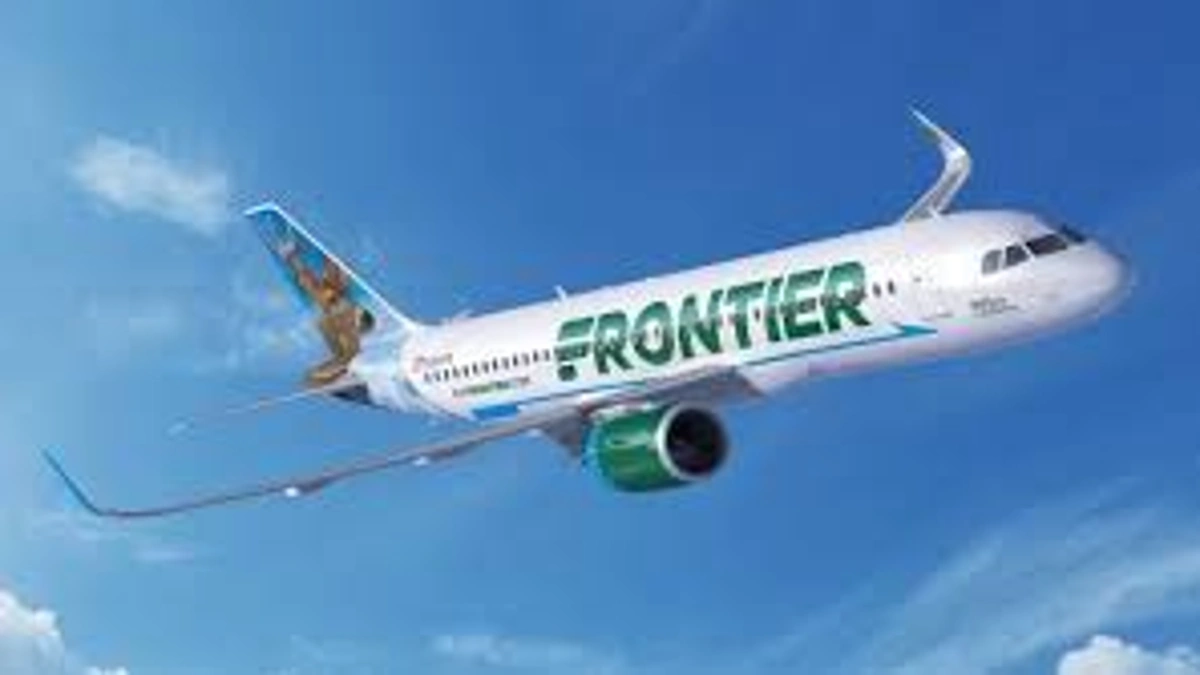Introduction: The End of the $29 Ticket Era
In an unusually candid moment that reverberated through aviation circles, Frontier Airlines CEO Barry Biffle warned that America’s era of ultra-cheap flying may soon be grounded. “There’s going to continue to be reductions in capacity in this industry,” he said—an admission that landed like turbulence across Wall Street and travel forums alike.
For decades, budget carriers turned weekend wanderlust into a national habit. Yet Biffle’s bluntness revealed how inflation, pilot shortages, and uneven demand are unraveling that low-fare formula. In the short term, travelers can expect leaner schedules and fewer $29 promotions; in the long term, an economic recalibration of the skies.
This investigative report dissects the numbers behind Frontier’s losses, the market forces squeezing every low-cost carrier, and the real-world impact on passengers who built their routines—and their budgets—around cheap domestic flights.
Interview: Barry Biffle on Resetting the Skies
Date: October 21, 2025 Time: 11:00 A.M. Location: Frontier Airlines Headquarters, Denver, Colorado
Interviewer (I): Mr. Biffle, your recent remarks rattled both travelers and investors. Were you signaling an industry correction or a Frontier-specific problem?
Barry Biffle (Frontier CEO): It’s broader than Frontier. There’s simply too much capacity relative to demand, especially domestically. Everyone added planes after COVID, assuming the leisure boom would last forever. It didn’t.
I: You mentioned “reductions in capacity.” What scale are we talking about?
Biffle: Airlines are already trimming schedules 5–10 percent for 2026. That sounds small, but for regional airports, it’s the difference between three flights a day and one.
I: Critics say your model—ultra-low-cost and high-volume—encourages overcapacity. Do you agree?
Biffle: Partly. The ULCC model works in strong demand cycles. When costs surge and consumers fly less, the math breaks. We’re tightening routes and focusing on profitability, not market share.
I: What does this mean for passengers who built their travel habits around cheap fares?
Biffle: They’ll still find deals, but not every weekend. Expect fewer flash sales and more dynamic pricing. The days of $19 coast-to-coast tickets are behind us for now.
I: Do you worry that honesty about contraction will scare customers?
Biffle: Transparency builds trust. People would rather hear hard truths than face surprise cancellations. Frontier’s message is simple: we’ll fly less, but fly better.
Read: Delta Flight DL275 Diverted LAX: Behind the Decision That Saved the Day
The CEO’s Warning: A Moment of Brutal Honesty
Biffle’s confession cut through corporate spin. Frontier posted $929 million in Q2 revenue yet still booked a $70 million loss—a paradox that underlines how thin ULCC margins have become. “This isn’t a blip,” he told analysts. “It’s structural.”
The root cause, he explained, is misaligned supply and demand. Carriers raced to restore 2019 capacity before leisure travelers returned in full force. Now jets fly half-full on Tuesdays while fuel costs soar. Frontier’s openness, unusual in a profit-sensitive industry, has sparked a reckoning: what happens when the low-fare miracle stops making money?
Why the Warning Matters: Forces Behind the Shift
The turbulence facing Frontier is hardly unique. Aviation economist Dr. Elena Morales (University of Texas) identifies five pressure points:
- Overcapacity – Too many seats chasing the same pool of leisure travelers.
- Rising Costs – Jet fuel and maintenance up > 30 percent since 2022.
- Labour Inflation – New pilot contracts add 20–25 percent to payrolls.
- Shifting Demand – Hybrid work cuts weekday volume.
- Fee Fatigue – Consumers resent baggage add-ons once tolerated.
“These variables collide into a profitability trap,” Morales notes. “Low-cost airlines once thrived on predictability. That predictability is gone.”
Table 1: Frontier Airlines Key Financials (2025 Q2)
| Metric | Reported Figure | Industry Implication |
|---|---|---|
| Revenue | $929 million | Growth without sustainable margin |
| Net Loss | $70 million | ULCCs struggling despite demand |
| Load Factor | ≈ 84 % | Seats filled, profits missing |
| Domestic Capacity Plan | –8 % (2026 projection) | Contraction phase underway |
| Break-even Fuel Price | $2.45 per gallon | Currently > $2.90 / gal |
The Consumer Impact: Shrinking Choices Ahead
Travelers will soon feel the pinch. As small-market service disappears, connection times lengthen and spontaneity fades. Analyst Renee Patterson of the consultancy AeroScope says,
“Cheap flying democratized mobility, but contraction will reverse some of that access. Expect higher fares in places like Des Moines or El Paso before you see them in New York.”
For passengers, adaptation means booking earlier, budgeting more, and treating flexibility as currency.
How Passengers Can Prepare and Protect Themselves
- Book Smart: Select fares with change flexibility; basic fares risk higher disruption.
- Monitor Schedules: Apps update flight times faster than email alerts.
- Favor Hubs: Major airports keep service longest when cuts hit.
- Travel Light: Ancillary fees will rise—avoid them.
- Buy Insurance: Cancellations and reschedules are likely.
Veteran flyer Sarah Leung, who logs 60 flights a year, says, “I used to gamble on $39 sales. Now I pay $20 more for reliability—it’s worth every cent.”
Read: Air France A350 Chicago Flight Return: The Inside Story of a Transatlantic Turnaround
Industry Voices: A Chorus of Caution
“There’s too much capacity in the system.” — Barry Biffle
“Even major carriers have loss-making domestic routes.” — Anonymous Legacy Executive
“Passengers were conditioned for perpetual low fares; economics don’t work that way.” — Dr. Morales
“The ULCC model isn’t dead; it’s evolving toward smarter yield management.” — Frontier Spokesperson James Holt
The consensus: consolidation and realism will define 2026, not expansion.
The Future of the ULCC Model
The ultra-low-cost formula—cheap base fares, paid extras—succeeded through high volume. But as volume falls, the structure strains. Professor Noah Keller (Emory Goizueta Business School) predicts a hybrid future:
“Expect airlines to blend ULCC pricing with legacy amenities—bundled seats, loyalty tiers, and subscription travel passes. Pure ‘bare-bones’ flying is unsustainable.”
Frontier is testing AI-driven route optimization and digital fee bundling, turning data into margin. Its mantra: fewer flights, fuller planes, higher yield.
Table 2: Airline Strategies in a Tightening Market (2025–2026)
| Airline | Strategic Focus | Capacity Outlook | Profit Approach |
|---|---|---|---|
| Frontier | Route efficiency, AI pricing | –5 % to –10 % | Lean network, higher yield |
| Spirit | Cost containment, merger talks | –8 % | Consolidation path |
| Allegiant | Leisure focus, secondary airports | Stable to –2 % | Seasonal scheduling |
| Legacy Carriers | Premium cabin growth, international expansion | Flat to +2 % | Diversify revenue streams |
The Broader Economic Lens
Aviation sits at the crossroads of macro forces: high interest rates inflate aircraft leases, jet fuel volatility squeezes budgets, and wage hikes spread industry-wide. Environmental mandates compound cost through carbon-credit compliance. “It’s the most inflation-sensitive sector of the economy,” notes economist Dr. Priya Anand. “When oil and labour rise simultaneously, fare wars are financial suicide.”
Expert Insight: Analysts Look Ahead
Market researcher Ethan Rivers (FlightData Analytics) interprets Biffle’s statement as both warning and reset:
“This correction is healthy. Too many planes chasing too few passengers is bad economics. Once capacity stabilizes, ULCCs can be profitable again.”
Yet not all share his optimism. Aviation attorney Megan Shaw counters, > “If fares rise too fast, regulators may scrutinize collusive capacity cuts. Airlines must balance profit discipline with consumer access.”
Passenger Perspective: Adapting to the New Normal
From Denver to Dallas, cheap flying transformed lifestyles. Students flew home monthly; freelancers commuted by air. Now, travel habits shift toward consolidation—fewer, longer trips. Frontier’s recalibration symbolizes an inflection point between democratization and discipline. Passengers who plan early, leverage loyalty credits, and remain flexible will continue to benefit even as “everyday” low fares fade.
Airline Industry at a Crossroads
Legacy giants—Delta, United, American—are tilting upscale, investing in business class and global routes. ULCCs trim domestic exposure. Analyst Keller calls it “a bifurcation of the skies.” Travelers will encounter fewer choices but smoother operations as schedule stability replaces saturation. Mergers and alliances may follow, accelerating the shake-out phase already underway.
The Broader Public Implication
Low-fare access reshaped regional economies—think Orlando’s tourism surge or Denver’s startup scene. A retrenchment could affect mobility and jobs. “Cheap air travel became a social infrastructure,” explains urban policy expert Dr. Marcus Liu (UCLA). “If it contracts, expect ripple effects in housing, retail, and labor mobility.”
Bullet Section: Five Key Takeaways for Travelers
- Expect fewer nonstop options from small and mid-size airports.
- Fare volatility will increase—use fare-tracking apps and book early.
- Ancillary fees (bags, seats, changes) will rise faster than base fares.
- Flexibility and insurance remain the traveler’s best defenses.
- Loyalty programs will pivot from miles to value-bundled offers.
Conclusion: The Era of Measured Flight
Barry Biffle’s candor marks a turning point for U.S. aviation. After years of limitless growth and $29 tickets, the industry is entering a phase of discipline. Frontier’s realignment mirrors a wider truth: cheap is no longer synonymous with sustainable.
As the market tightens, airlines that adapt—through efficiency, technology, and transparency—will survive. For travelers, this new chapter requires strategy over impulse and expectation over entitlement. The ULCC revolution is not over; it is maturing. And in Biffle’s own words, > “We’re not ending affordable flying—we’re making it make sense again.”
FAQs
Q1 – Is this warning only about Frontier Airlines?
No. It reflects a nationwide trend as carriers reduce domestic capacity to restore profitability.
Q2 – Will flights be cancelled en masse?
Unlikely. Expect gradual reductions and schedule adjustments, not mass groundings.
Q3 – Should travelers avoid low-cost carriers now?
No. ULCCs still offer value for flexible flyers—just expect fewer routes and less elastic pricing.
Q4 – Will international fares be affected?
Minimal impact. The pressure lies in domestic markets; long-haul demand remains robust.
Q5 – Are higher fares inevitable?
Yes, modestly. Reduced supply will push average ticket prices higher, though competition should prevent extreme spikes.
Citations and References
- Frontier Airlines Q2 Earnings Report, Investor Relations 2025.
- U.S. Bureau of Transportation Statistics (2024). Domestic Air Capacity and Yield Data.
- International Air Transport Association (IATA). Fuel Cost Monitor and Airline Profitability Outlook 2025.
- Dr. Elena Morales, University of Texas Aviation Economics Center, Interview (2025).
- Federal Aviation Administration (FAA). U.S. Airline Capacity Forecast 2026.
- Ethan Rivers, FlightData Analytics Quarterly Brief (2025).
- AeroScope Consulting. U.S. ULCC Market Assessment.
- Dr. Priya Anand, “Inflation and Air Travel Margins,” Journal of Applied Economics, 2024.
- Dr. Marcus Liu, UCLA Urban Policy Institute Report (2025).
- Megan Shaw, Aviation Law Review (2025).

